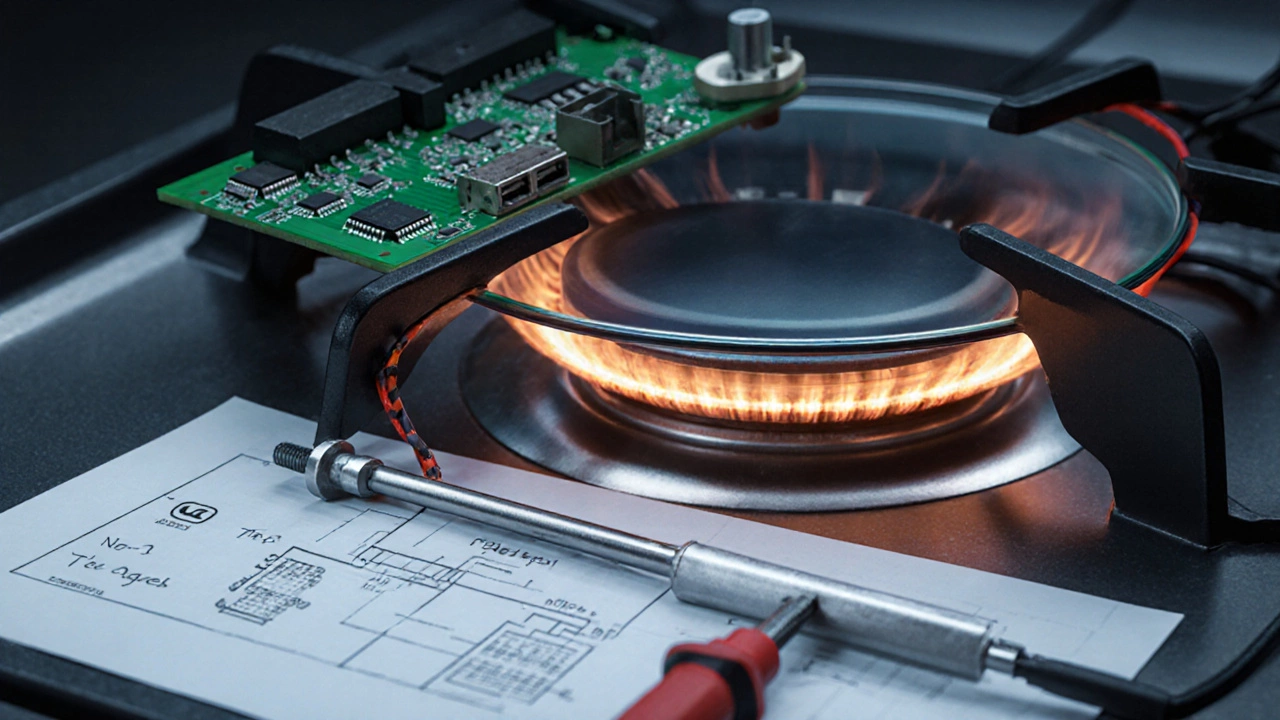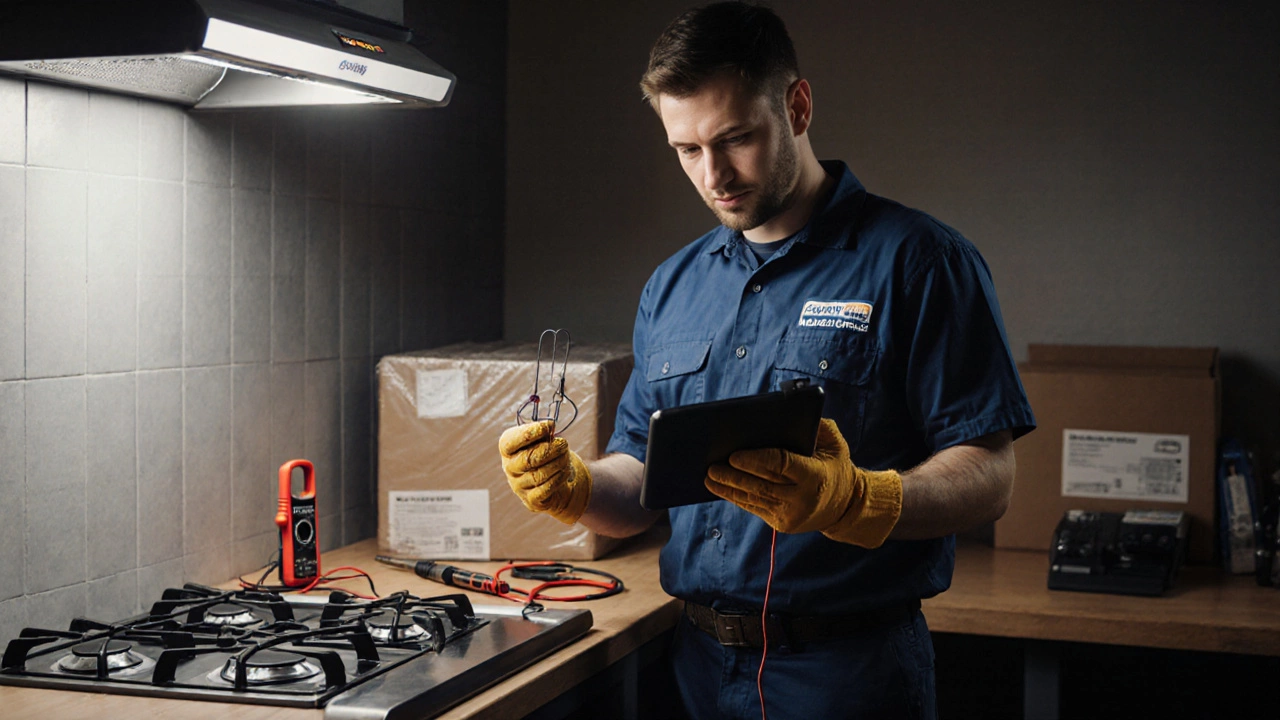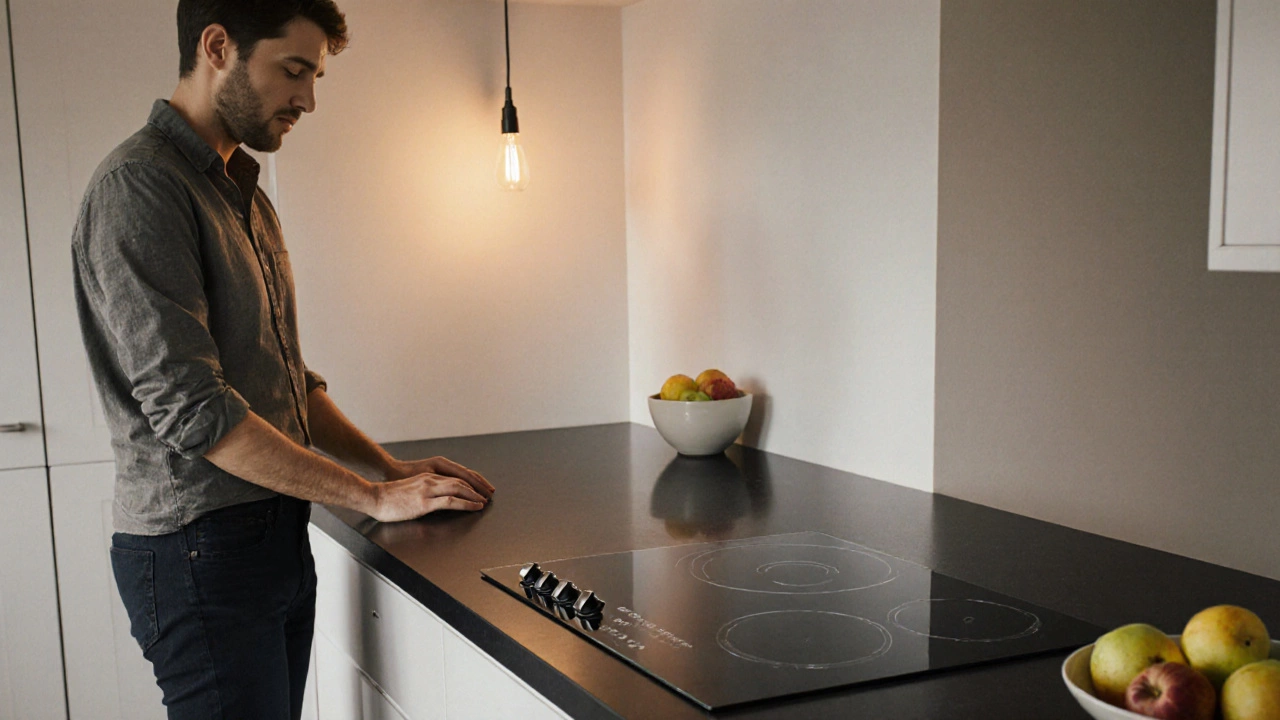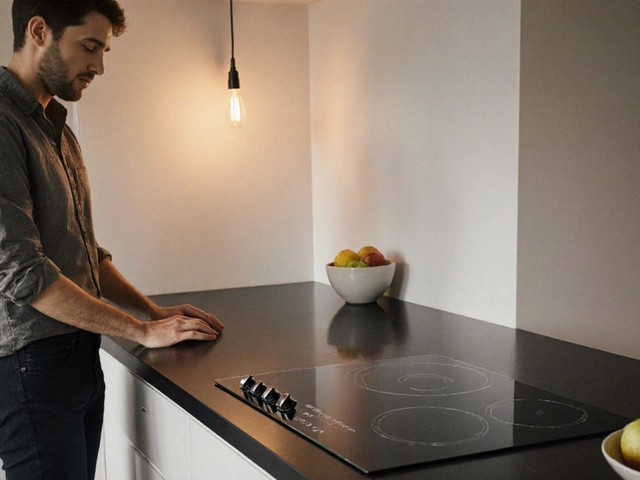Electric Hob Repair Cost Calculator
Calculate Repair Costs
Determine if it's more cost-effective to repair your electric hob or replace it completely.
When an electric hob is a kitchen appliance that uses electric heating elements to heat pots and pans starts acting up, the first question most homeowners ask is whether it’s worth fixing or just buying a new one. The short answer: yes, many electric hobs can be repaired, but the decision depends on the fault, your skill level, and the cost of parts versus a replacement.
How an Electric Hob Works
An electric hob converts electrical energy into heat through a set of resistive heating elements. The elements sit beneath a smooth ceramic glass surface that spreads heat evenly and makes cleaning easier. When you turn a knob or press a touch control, the control board regulates power flow to the heating elements based on the selected temperature. A thermostat monitors the element temperature and tells the control board when to cut power. If anything in this chain fails, the hob either won’t heat, heats unevenly, or shuts off unexpectedly.
Common Problems That Are Often Repairable
- Element failure - The most frequent issue. A burned‑out element will produce no heat or only a weak glow.
- Thermostat or temperature sensor fault - Causes inaccurate heating or frequent power cuts.
- Control board glitches - Leads to unresponsive knobs, flickering displays, or random shut‑offs.
- Loose or damaged power cord - Results in intermittent power or a complete loss of function.
- Ceramic surface cracks - May affect heat distribution and pose safety risks.
- Tripped residual current device (RCD) - Often a sign of a short circuit or earth fault.
Most of these faults can be addressed either by a DIY enthusiast with the right tools or by a qualified technician.
DIY vs. Professional Repair: What to Consider
Before you grab a screwdriver, weigh these factors:
- Safety regulations - UK wiring standards (BS 7671) require that any work on mains‑connected appliances be done with the breaker switched off and, ideally, verified with a voltage tester.
- Tool requirements - A multimeter, screwdrivers, and possibly a soldering iron are essential for most diagnostics.
- Warranty status - If your hob is still under the manufacturer’s warranty, opening it up could void coverage.
- Skill level - Replacing a heating element is straightforward; fixing a control board often needs soldering experience.
- Cost of parts - Genuine OEM parts can be pricey, but they’re usually cheaper than a brand‑new hob.
If any of these raise red flags, call a technician who specialises in electric hob repair and follows UK electrical safety codes. A professional will also handle the safe disposal of faulty components.

Step‑by‑Step: Replacing a Faulty Heating Element
- Turn off the main circuit breaker that supplies power to the hob. Verify there’s no voltage with a tester.
- Remove the hob’s front panel - usually secured with a few concealed screws.
- Locate the heating element; it’s a metal coil or strip sitting under the ceramic glass.
- Disconnect the element’s wiring harness. Take a photo beforehand to remember the connection order.
- Unscrew the element brackets and lift the element out.
- Insert the new element, re‑attach the brackets, and reconnect the wiring exactly as shown in your photo.
- Replace the front panel, restore power, and test each zone for proper heating.
Most DIYers finish this job in 45‑60 minutes, and a brand‑new element typically costs £30‑£70 depending on the hob model.
When Repair Isn’t Worth It
Even though many issues are fixable, there are scenarios where replacing the hob makes more sense:
- Multiple simultaneous faults - a failing control board plus cracked ceramic surface usually signals end‑of‑life.
- High repair cost - if parts and labour exceed 50 % of a new unit’s price, replacement is more economical.
- Out‑of‑production models - sourcing authentic parts can be difficult and expensive.
- Energy efficiency concerns - newer hobs often have induction technology, which uses less electricity than traditional electric coils.
In these cases, budgeting for a new hob (average £300‑£600 for a quality electric model) may save you time and future headaches.
Choosing a Repair Service in the UK
Not all repair services are equal. Ask these questions before hiring:
- Is the technician certified under Part P of the Building Regulations?
- Do they offer a written estimate before starting work?
- What warranty do they provide on parts and labour?
- Can they source OEM parts, or will they use aftermarket equivalents?
- Do they have experience with your specific hob brand (e.g., Bosch, AEG, Smeg)?
Local services in Bristol often charge £70‑£120 for a diagnosis, with repair rates ranging from £80 to £200 depending on complexity.

Quick Repair Checklist
- Turn off the breaker and verify zero voltage.
- Check warranty status.
- Identify the fault using the table below.
- Decide DIY or professional based on safety, tools, and cost.
- Order genuine replacement parts if DIY.
- Document the process with photos for future reference.
- Test the hob thoroughly before normal use.
| Fault | Likely Cause | DIY Feasibility | Typical Cost (GBP) |
|---|---|---|---|
| No heat on one zone | Burned heating element | Yes | £30‑£70 (part) + £0‑£20 (tools) |
| Intermittent heating | Loose power cord or connector | Yes | £10‑£25 (cord) + £0‑£15 (labour) |
| Display flickers / knobs unresponsive | Faulty control board | Usually No | £80‑£150 (board) + £50‑£100 (service) |
| Hob trips RCD | Short circuit or earth fault | Rarely | £0‑£30 (diagnostic) + £70‑£120 (repair) |
| Cracked ceramic surface | Physical impact | No (requires specialist) | £150‑£250 (replacement glass) |
| Temperature overshoot | Defective thermostat | Yes (if spare available) | £20‑£45 (thermostat) + £20‑£40 (labour) |
Bottom Line: Can Electric Hobs Be Repaired?
The answer is a resounding yes, provided the fault isn’t severe and you follow proper safety steps. Simple issues like a faulty heating element or a loose cord are cheap and easy fixes, while complex board failures or cracked glass may tip the scales toward replacement. electric hob repair can extend the life of a beloved kitchen appliance, save you money, and reduce waste.
Frequently Asked Questions
What is the typical lifespan of an electric hob?
A well‑maintained electric hob can last 12‑15 years, though components like heating elements may need replacement every 5‑8 years depending on usage.
Is it safe to replace a heating element myself?
Yes, as long as you switch off the mains at the consumer unit, verify zero voltage, and use the correct replacement part for your hob model.
Can a cracked ceramic glass be repaired?
No, cracked glass must be replaced. Attempting a DIY fix can cause hot spots, leading to fire risk.
Do I need a qualified electrician for hob repairs?
If the repair involves wiring, a control board, or any work that could affect the mains supply, a Part‑P‑registered electrician should do it. Simple element swaps can be DIY if you’re comfortable with basic electrical safety.
How much does a professional electric hob repair usually cost?
A diagnosis in the UK typically costs £70‑£120. Fixes range from £80 for a simple element replacement to £250 for a control board overhaul. Prices vary by region and brand.
Will repairing my hob affect my home insurance?
As long as repairs follow UK electrical codes and are performed by qualified personnel when required, insurance policies are not impacted. Keep receipts as proof of compliance.




